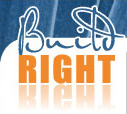Shear forces
Vertical shear forces are generated in a beam by the applied loads and by the support reaction. The reactions push up while the load pushes down. In most cases the maximum value of shear occurs close to the supports.
Look at the first diagram and imagine a stack of books pressed together between your hands. The books that are furthest from your hands (your hands are the supports) are the ones which are most likely to experience shear forces and are the most likely to slip.

The second diagram is a simple graph that has been drawn to represent the amount of shear force in the beam. There are a number of common situations of shear forces in beams which are shown in the following activity.

Shear force
Each beam diagram has a matching shear force graph. The first diagram and graph have been matched correctly as an example. Remember that in most cases the maximum value of shear occurs close to the supports. Keep this in mind when you try the following activity.
Select the remaining graphs to move them next to their matching diagram.

